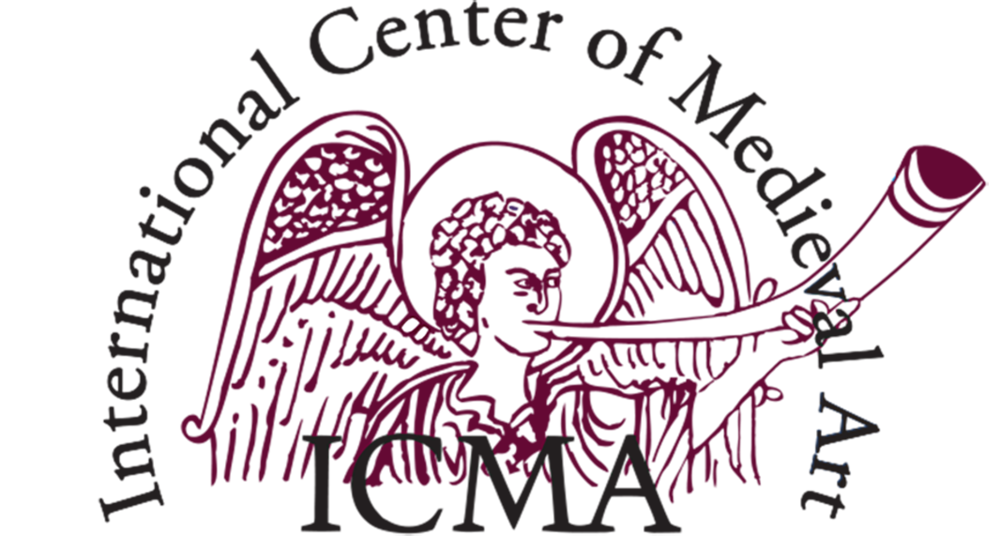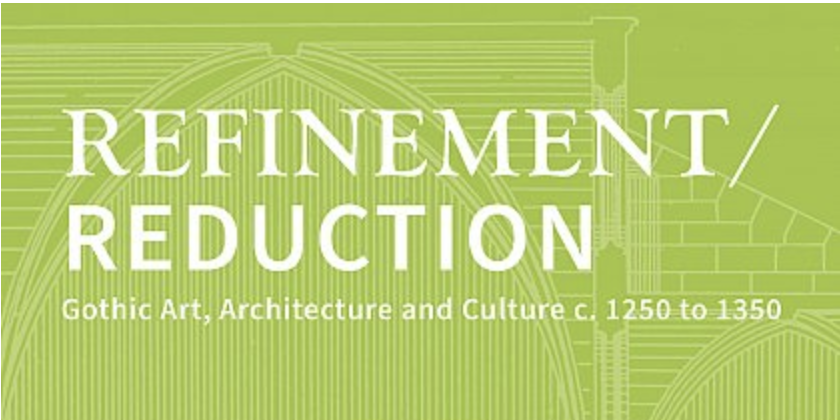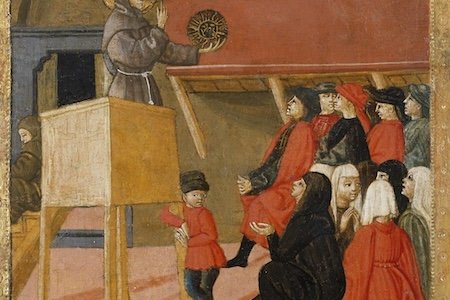International conference
Refinement and/or Reduction?
Gothic Art, Architecture and Culture, c. 1250 to 1350
Institut für Kunstgeschichte und Archäologien Europas
Martin-Luther-Universität Halle-Wittenberg
23.05.–25.05.2024
Register By 12 May 2024
Concept and organization:
Prof. Dr Ute Engel (Martin-Luther-Universität Halle-Wittenberg)
Prof. Dr Christian Freigang (Freie Universität Berlin)
The international conference aims at an interdisciplinary reassessment of Gothic art and architecture between c. 1250 and 1350 in a broad European perspective. With an increased diversity of patrons and new technical facilities, the design options for artists and architects alike extended to a virtuoso refinement across media, on the one hand. On the other hand, new modes of reduction emerge, probably originating in economic, technical or programmatic tendencies of the time. The conference elucidates and discusses the cultural background of this paradoxical situation. Additionally, the conference intends to honour Paul Frankl (1878–1962), professor of the History of Art at the University of Halle 1921–1934. Forced into American exile, he became one of the leading scholars of the Gothic, based at the Institute of Advanced Studies in Princeton from 1940 onwards.
For more information, https://www.ikare.uni-halle.de/kunstgeschichte/forschung/tagungen/gotiktagung2024/
Programme
Thursday, 23.05.2024
15.00 h Registration
16.00 h Welcome
PANEL 1
GOTHIC ART AND ARCHITECTURE C. 1250 TO 1350, AND ITS HISTORIOGRAPHY
(Chairs: Prof. Dr Ute Engel and Prof. Dr Christian Freigang)
16.15 h
Prof. Dr Ute Engel (Martin-Luther-Universität Halle-Wittenberg):
"Refinement and/or Reduction c. 1250 to 1350: An Introduction"
16.45 h
Prof. Dr Christian Freigang (Freie Universität Berlin):
“‘Doktrinäre Gotik – Reduktionsgotik‘. Architectural History between Criticism of Academicism and Theory of Space”
17.15 h
Prof. Dr Beatrice Kitzinger (Princeton University):
"Encountering Paul Frankl in the Princeton Archive"
17.45 h Discussion
19.00 h KEYNOTE LECTURE
Prof. Dr Paul Binski (University of Cambridge):
“Subtlety and Gothic Architecture”
20.00 h Reception
Friday, 24.5.2024
PANEL 2
PARIS AND COURT CULTURE
(Chair: Dr Antje Fehrmann)
9.00 h
Prof. Dr Dany Sandron (Sorbonne Université, Paris):
"Opus parisianum? Architecture in Paris c. 1250–1350"
9.30 h
Prof. Dr Lindy Grant (University of Reading):
“The Aesthetics of Asceticism: Louis IX and Court Culture after the Return from the 1248–1254 Crusade”
10.00 h
Prof. Dr Michael T. Davis (Mount Holyoke College):
"Synthesis, Invention and Transformation in French Gothic Architecture, 1250–1320 "
10.30 h Discussion
10.45 h Coffee/Tea
PANEL 3
BEYOND PARIS
(Chair: Prof. Dr Ute Engel)
11.15 h
Prof. Dr Michaelis Olympios (University of Cyprus, Nicosia):
"Architecture and Ritual at the Laon Cathedral Chapels"
11.45 h
Prof. Dr Christoph Brachmann (University of North Carolina Chapel Hill):
„The Simultaneity of the Non-Simultaneous”
12.15 h
Prof. Dr Etienne Hamon (Université de Lille):
"The Updating of Graphic Models from the 1300s in 15th-century Architecture and Decorative Arts: Some Examples from Central France"
12.45 h Discussion
13.00 h Lunch break
PANEL 4
CENTRES IN THE SOUTH
(Chair: Prof. Dr Christian Freigang)
14.30 h
Dr Markus Schlicht (Université Bordeaux Montaigne):
"Refinement to Reduction: The Choir of Bordeaux Cathedral (from 1252)"
15.00 h
Dr Alexandra Gajewski (Burlington Magazine, London):
“Becoming a Papal Residence: Churches and Chapels in Avignon, from John XXII to Clement VI"
15.30 h
Dr Tom Nickson (Courtauld Institute of Art, London):
“Two for One? Berenguer de Montagut, Manresa, and Catalan Gothic”
16.00 h Discussion
16.15 h Coffee/Tea
PANEL 5
CROSS-MEDIA FIGURATIONS
(Chair: Prof. Dr Juliane von Fircks)
16.45 h
Prof. Dr Brigitte Kurmann-Schwarz (Universität Zürich)/Prof. Dr Peter Kurmann (Université de Fribourg):
„French Architecture and Stained Glass in Dialogue (1250–1350)“
17.15 h
Prof. Dr Tim Ayers (University of York):
“More or Less? The Chapter House and its Vestibule at York Minster”
17.45 h
Prof. Dr Evelin Wetter (Abegg-Stiftung, Riggisberg/Universität Leipzig):
"Embroidered Image and Surface. On the Reduction of the Background to Colour and Material in the Works of the Opus anglicanum"
18.15 h Discussion
Saturday, 25.5.2024
PANEL 6
INNOVATION AND INVENTION
(Chair: Dr Sascha Köhl)
9.00 h
Prof. Dr Marc Carel Schurr (Universität Trier):
"Less is more - Strasbourg Cathedral and the 'Avant-garde' of Architecture around 1300"
9.30 h
Prof. Dr Jacqueline Jung (Yale University, New Haven):
"Refinements of Time in Monumental Narrative Relief Sculpture after 1250"
10.00 h
PD Dr Christian Kayser (Technische Universität, München):
"The Western Tower of Freiburg Minster and the Invention of the Gothic Openwork Spire"
10.30 h Discussion
10.45 h Coffee/Tea
PANEL 7
CITYSCAPES
(Chair: Prof. Dr Markus Späth)
11.15 h
Dr Tobias Kunz (Staatliche Museen zu Berlin):
"Not Only Paris. Foreign Innovations and their Consequences in Cologne Sculpture"
11.45 h
Dr Zoe Opacic (Birkbeck College, University of London):
"Erfordia turrita: 'Reduktionsgotik' and Urban Refinement in Fourteenth-century Erfurt"
12.15 h
Dr Zoltán Bereczki (University of Debrecen):
“Franciscan Monasteries in the Medieval Cityscape. A Case Study of Sopron (HU) and Bratislava (SK)"
12.45 h Discussion
13.00 h Lunch break
PANEL 8
EUROPEAN TRANSFER
(Chair: Prof. Dr Christian Freigang)
14.00 h
Prof. Dr Robert Bork (University of Iowa):
“Reflections on Refinement: Plasticity versus Planarity between France and Germany, 1250–1350”
14.30 h
Prof. Dr Jakub Adamski (University of Warsaw):
“Strasbourg – Wrocław – Cracow. On the Transfer of Modern Architectural Design from the Upper Rhine Valley to Southern Poland from c. 1280“
15.00 h
Prof. Dr Yves Gallet (Université Bordeaux Montaigne):
"Refinement versus Reduction? A Showcase of Paradoxical Coexistence in 14th-Century Architecture: Matthias of Arras´s Work in Prague"
15.30 h Discussion
CONCLUSION
(Chair: Prof. Dr Ute Engel)
15.45 h
Prof. Dr Bruno Klein (Technische Universität, Dresden): "Conclusion and Perspectives on Gothic Art, Architecture and Culture c. 1250 to 1350"
16.15 h Coffee/Tea, End of conference
The conference will take place at Martin-Luther-Universität, Halle:
On 23 and 24 May 2024 at Universitätsplatz, Löwengebäude, Aula and Historischer Sessionssaal, Universitätsplatz 11, 06108 Halle (Saale);
on 25 May 2025 at Steintor-Campus, Hörsaal II, Emil-Abderhalden-Straße 28, 06108 Halle (Saale).
Additionally, there will be the chance to listen to the lectures online via web-link.
Registration
Please register for the conference until 12 May 2024, using the email address below.
Please note whether you will take part in presence or online:
sekretariat@kunstgesch.uni-halle.de
The conference is co-sponsered by:
Fritz Thyssen Stiftung
Ministerium für Wissenschaft, Energie, Klimaschutz und Umwelt Sachsen-Anhalt
Saalesparkasse
Contact: ute.engel@kunstgesch.uni-halle.de
















